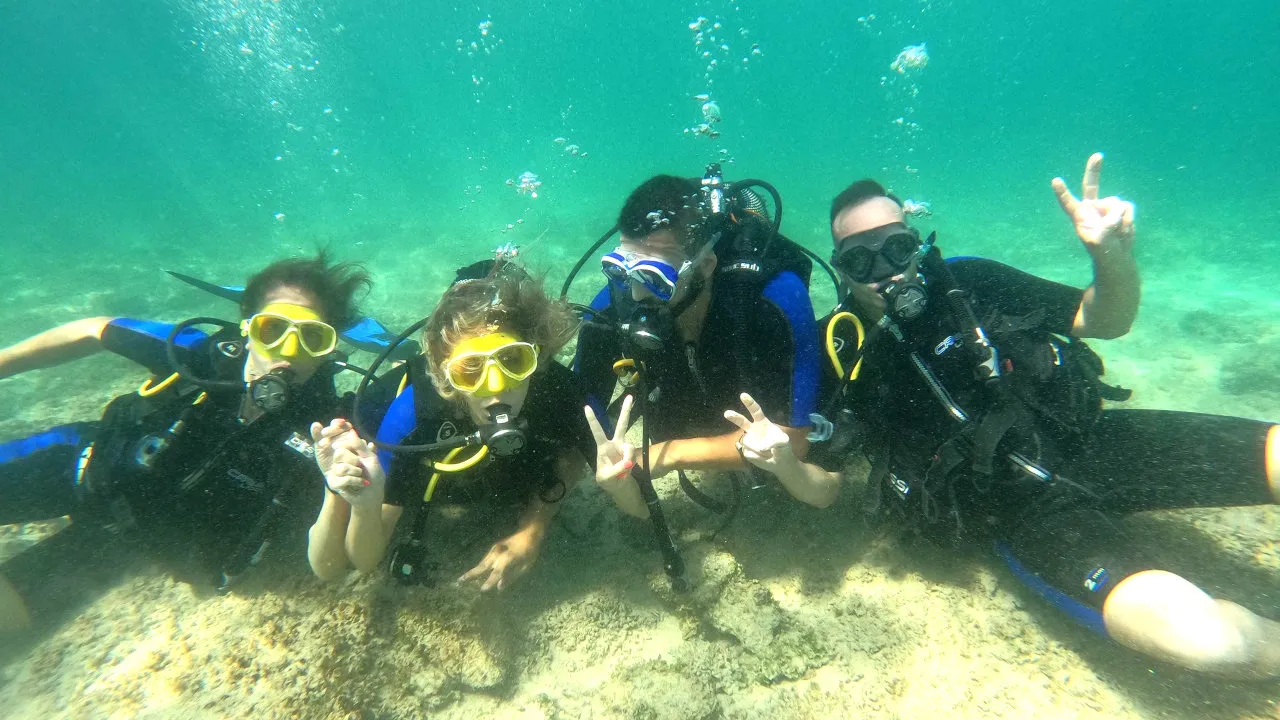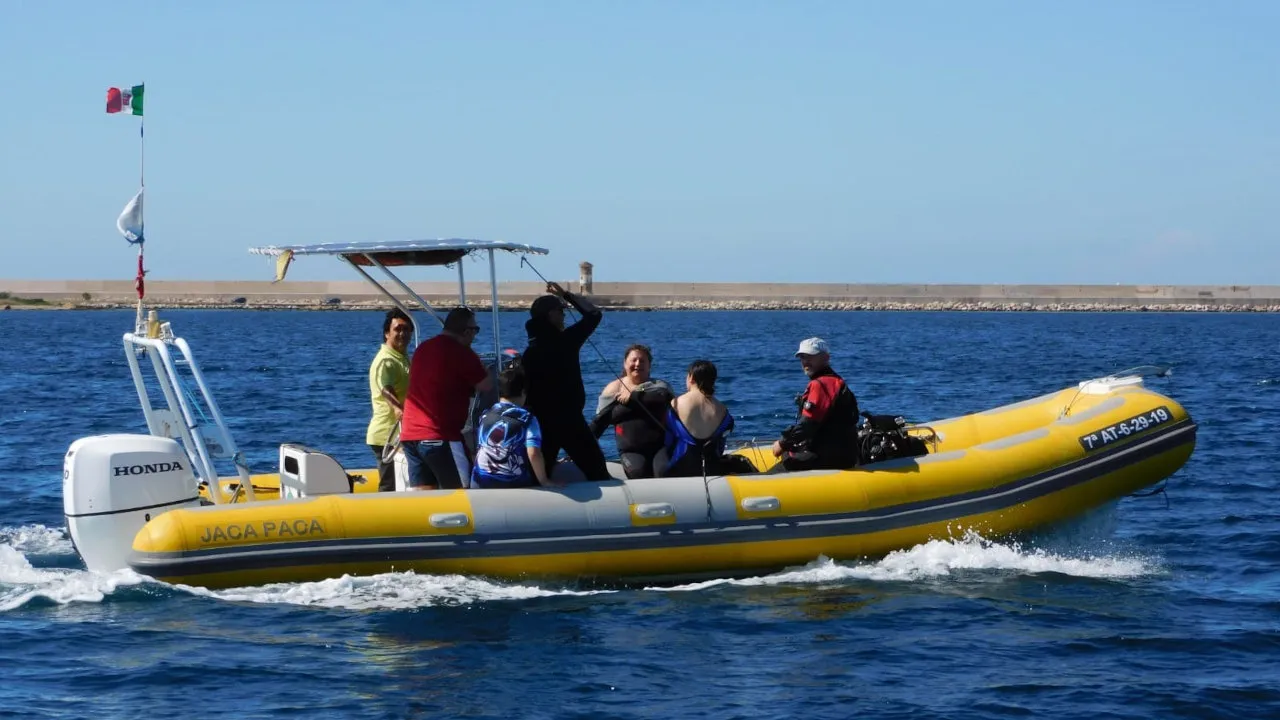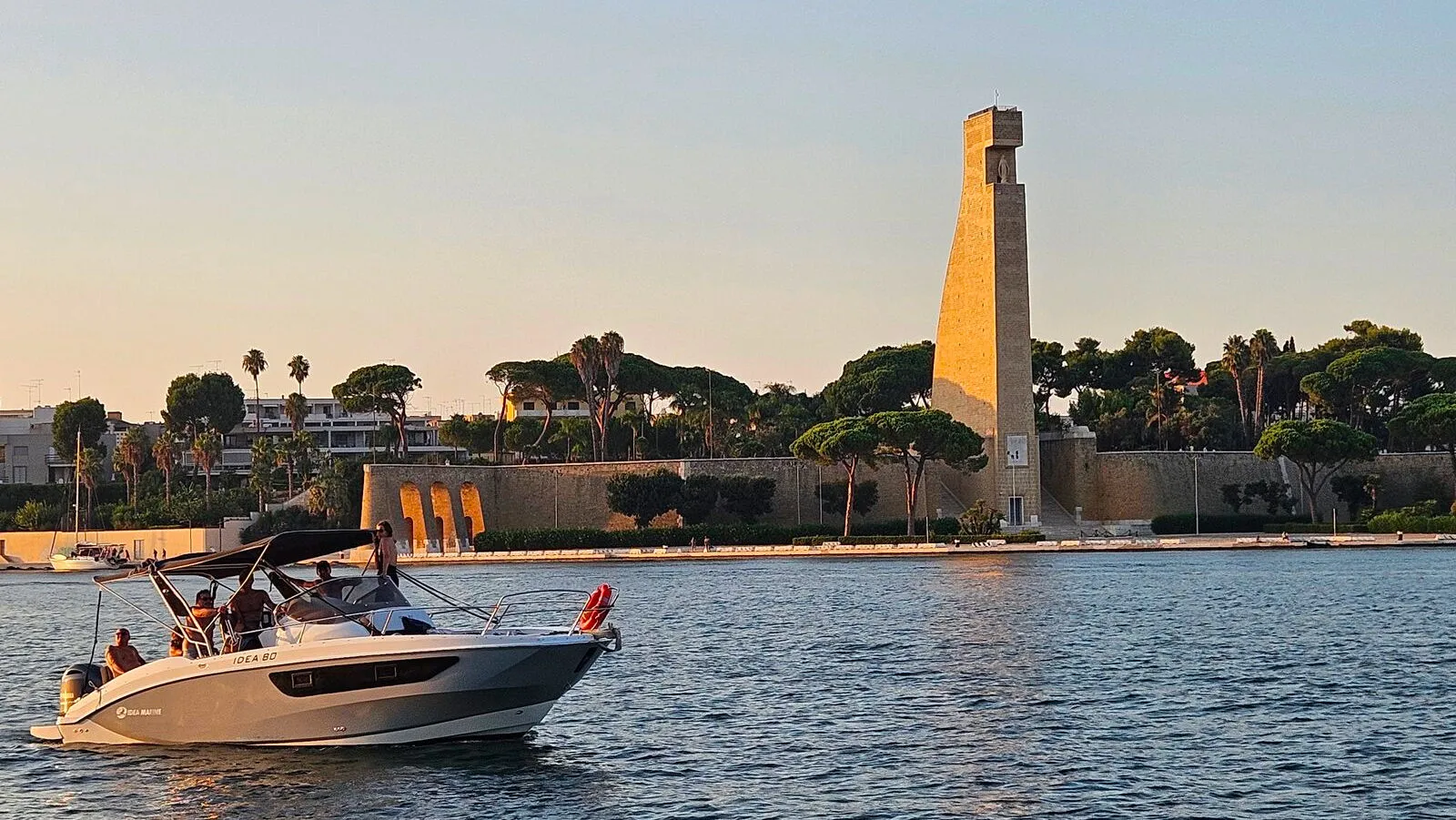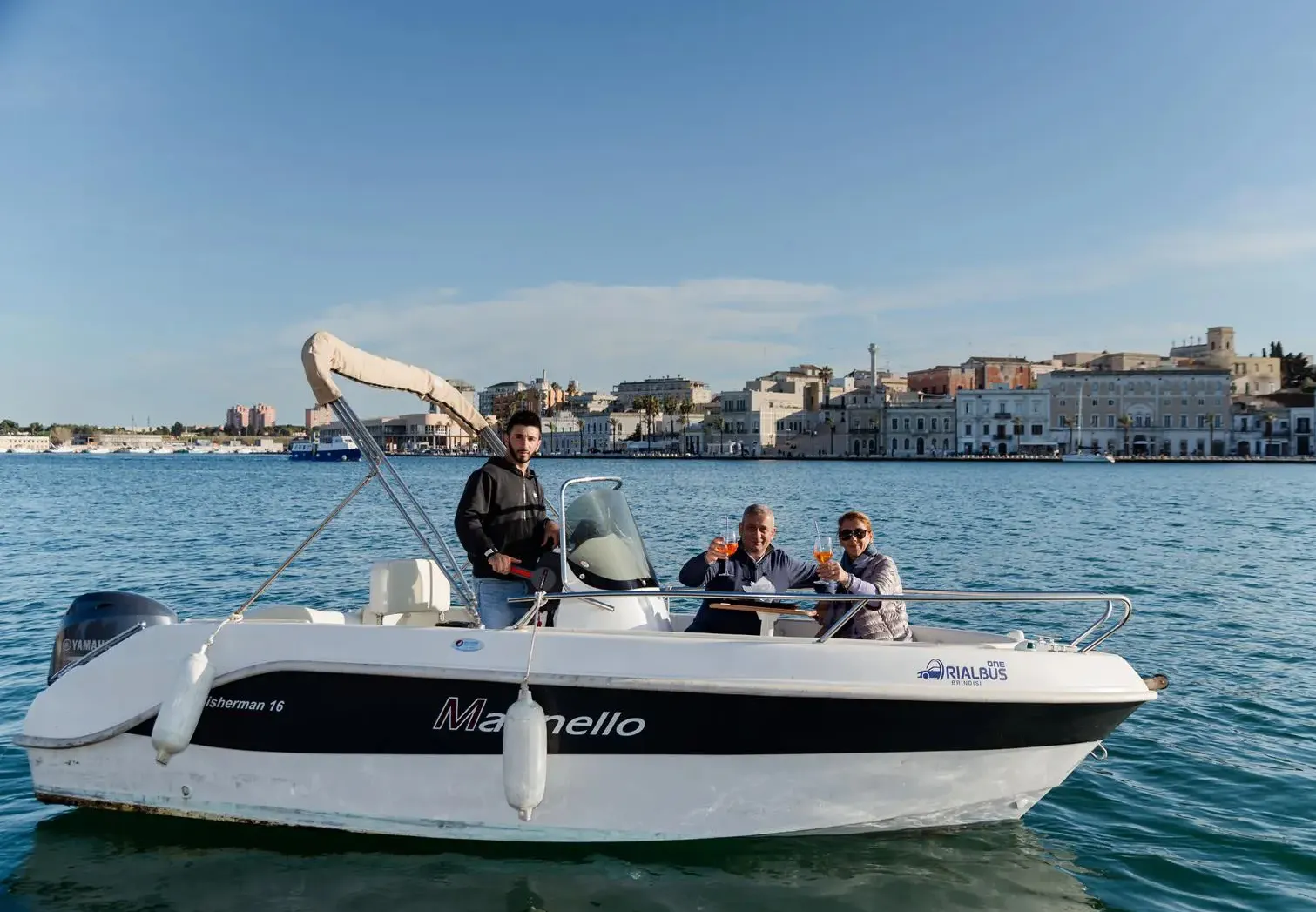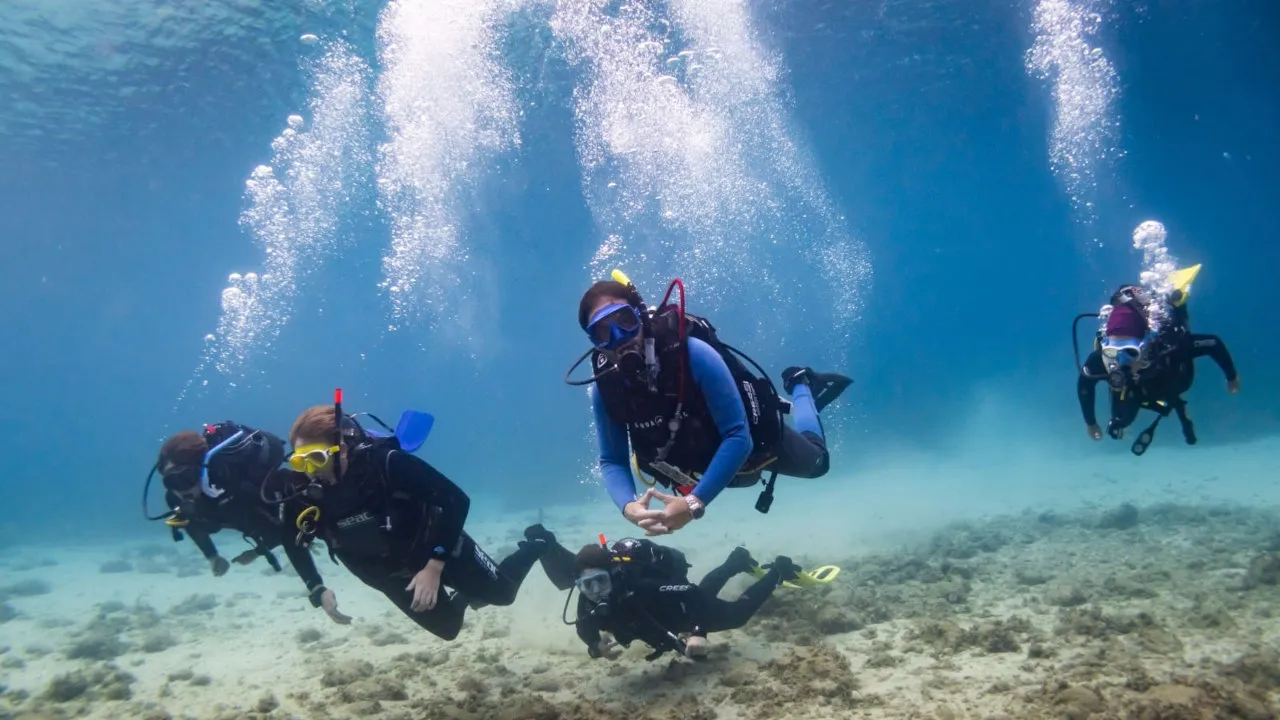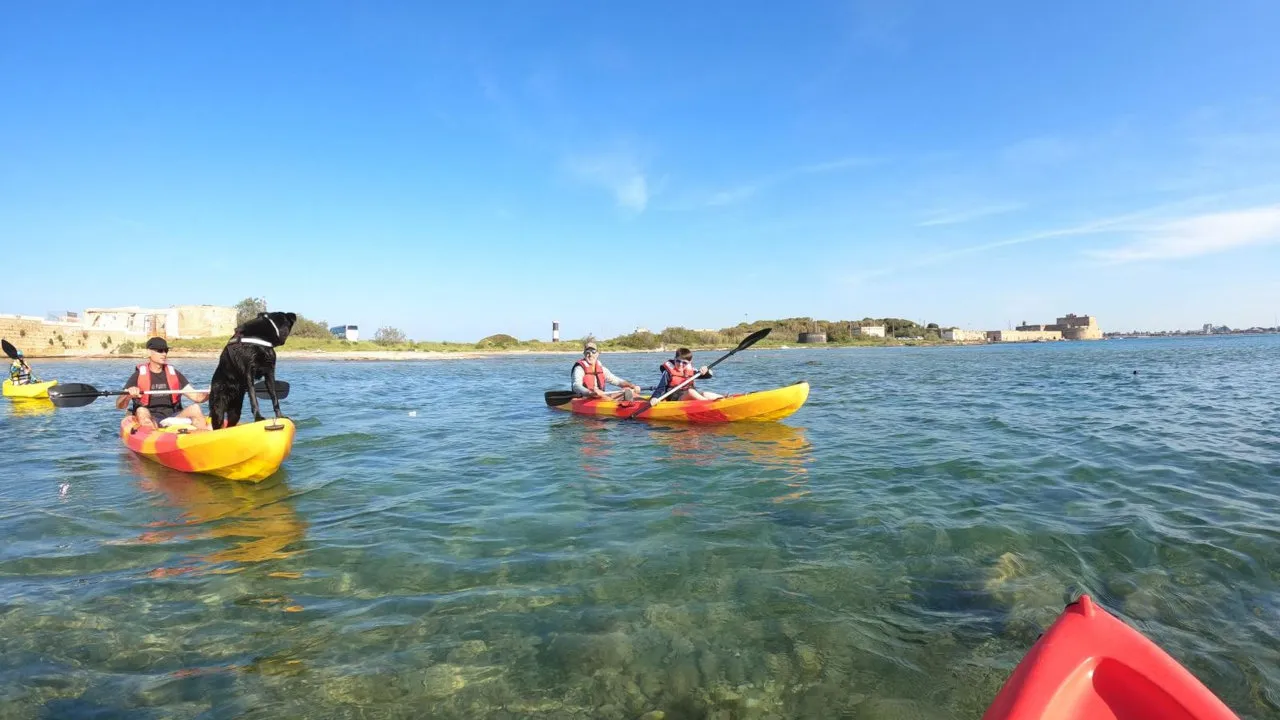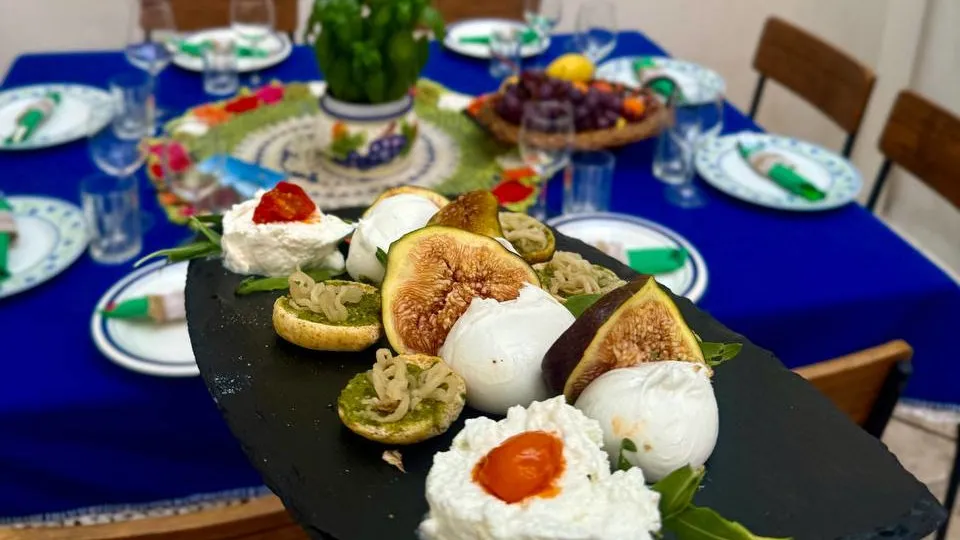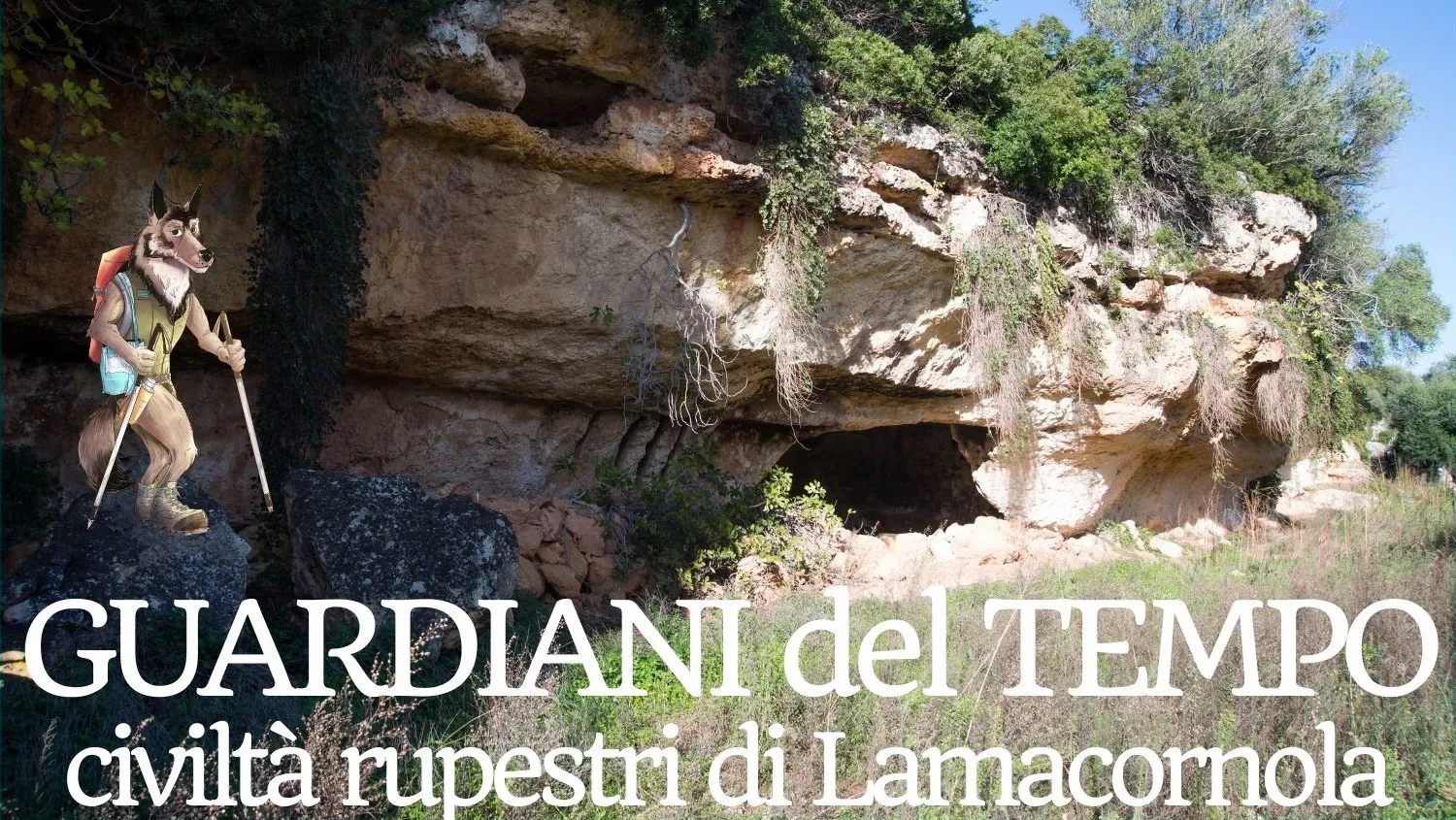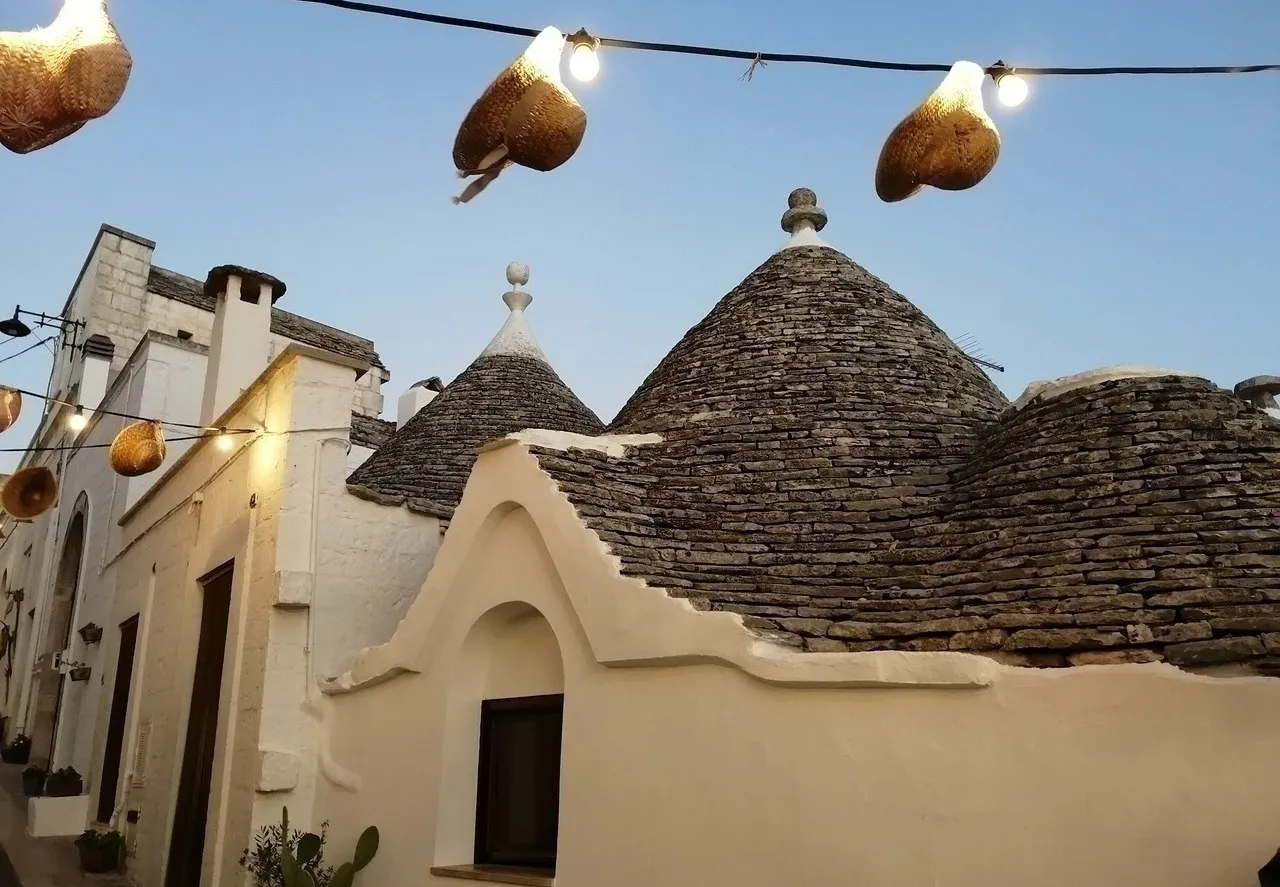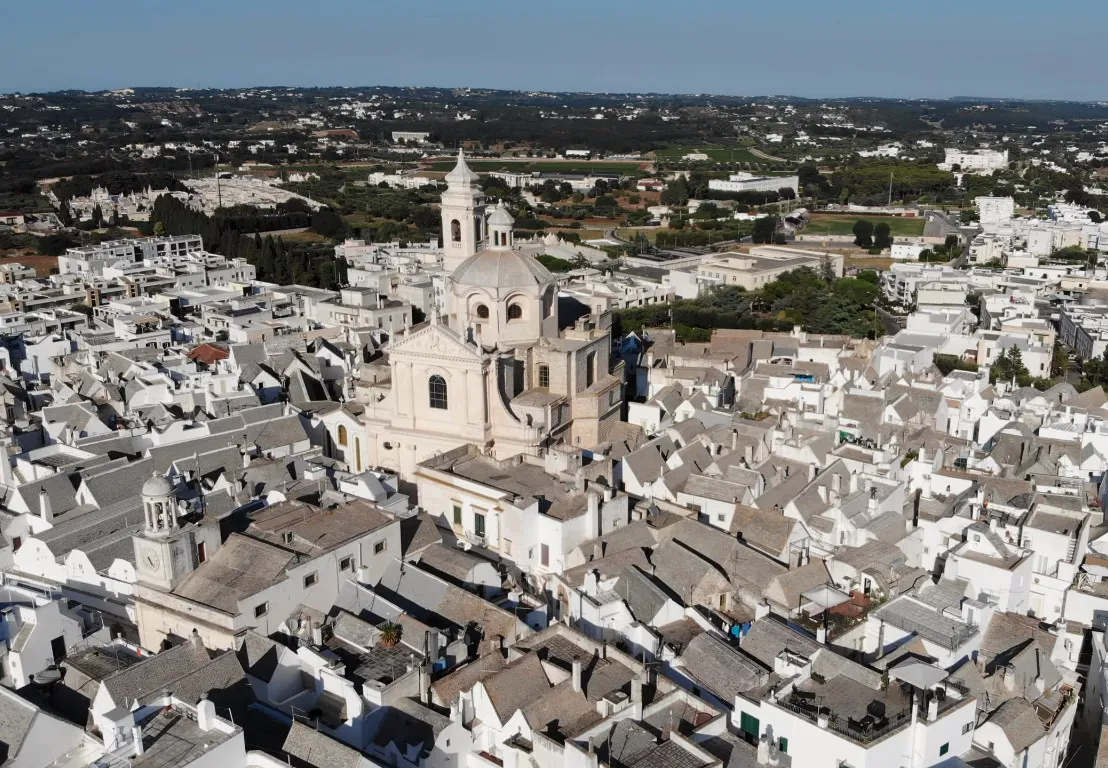What to see in Brindisi: a complete guide to history, sea and authentic flavours
Updated at: 24-02-2025
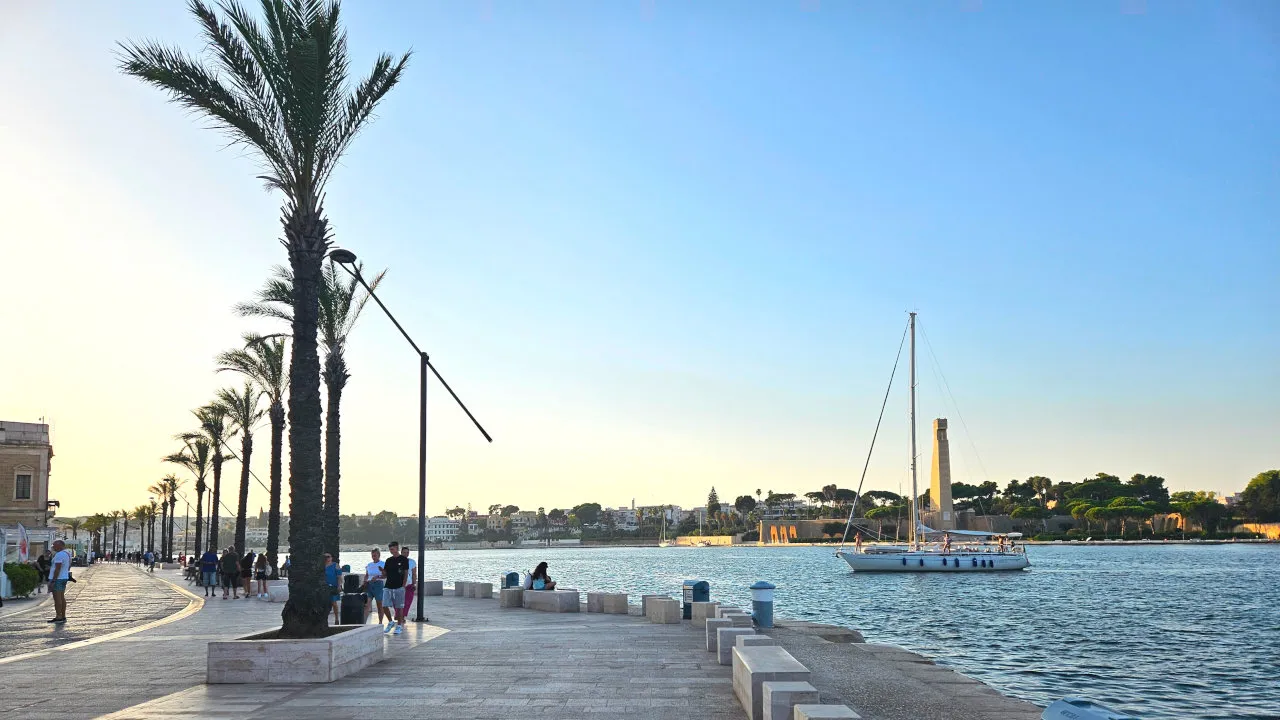
Overlooking the Adriatic Sea and often regarded as a mere “gateway” to Salento or Greece, Brindisi is in fact a city full of wonders to discover.
If you're wondering what to see, this strategic port will surprise you with historical monuments, archaeological sites, medieval churches, and a fascinating waterfront. All of it is accompanied by an authentic gastronomic tradition. In this guide, you'll find practical tips and concrete examples for an unforgettable experience.
If you already know you'll only have a few hours available, we recommend reading our guide: Brindisi: what to see in a few hours
visit.puglia.it has personally explored the locations described, working with certified tour guides to verify times and information about monuments, museums, and attractions. The data is drawn from historical documents, archaeological sources, and local accounts. Although we make every effort to keep the content updated, we recommend checking official channels for any schedule changes or special openings.
BRINDISI: BETWEEN SEA AND HISTORY
Brindisi’s connection to the sea dates back to Roman times, when its port marked the end of the Via Appia and was one of the Empire’s most important ports of call. Today, it’s just 6 km from Salento Airport and remains a vital crossroads for connections to Greece, Albania, and Turkey.
Regina Margherita Waterfront
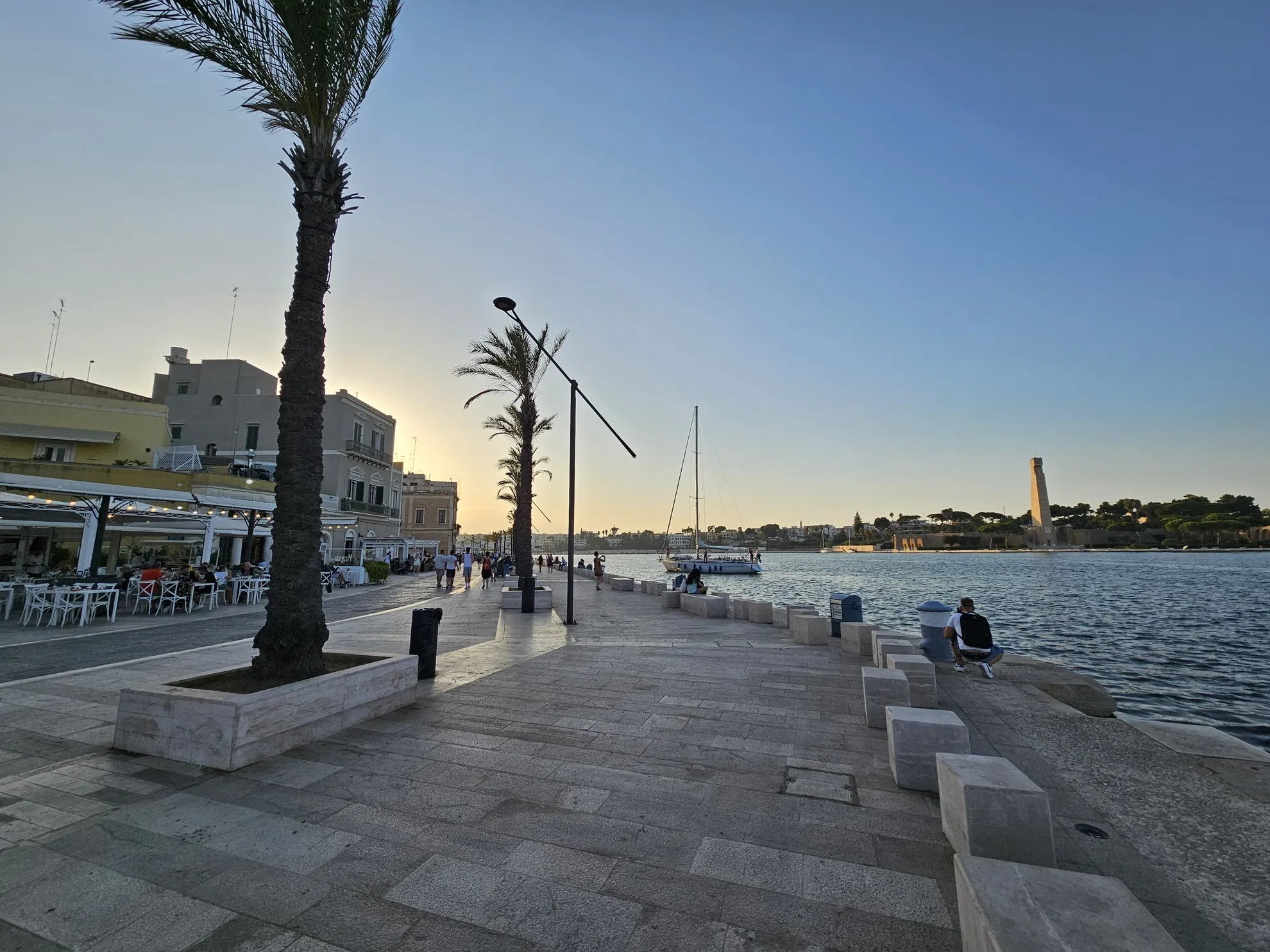
– Panoramic stroll. Walking along the port, you can admire elegant buildings, restaurants, and cafés.
– Evening atmosphere. At sunset, the city lights reflect on the water, creating a romantic view. In summer, musical events and tasting evenings are often held.
THE HISTORIC HEART: PIAZZA DUOMO AND SURROUNDINGS
In the picturesque Piazza Duomo, you'll find some of Brindisi’s most iconic landmarks, bearing witness to the area's historical and artistic layering.
The Cathedral (Basilica della Visitazione)
– Medieval origins. Founded in the 11th century, it has undergone numerous renovations due to earthquakes.
– Interiors to explore. It houses fragments of the original floor, sacred mosaics, and relics of Saint Theodore of Amasea, the city’s patron saint. Volunteers from the Archdiocese organize guided tours during peak tourist periods.
The Seminary and Palazzo Balsamo
– Composite architecture. The elegant exteriors reflect the blend of Roman, Byzantine, and Baroque influences, showcasing Brindisi’s rich history.
Portico of the Knights Templar and Provincial Archaeological Museum
– Gothic portal. Passing through its medieval arches, you enter the museum, which houses statues, ceramics, and artifacts from all over Puglia.
– Historical insight. One of the city’s most visited cultural centers, it hosts a collection of bronze statues found in the port's waters and offers a fascinating journey into the past of this maritime city.
FROM THE ROMAN COLUMNS TO THE SEA
From the historic center, passing through Piazza Duomo, you can reach the Regina Margherita Waterfront and the Scalinata Virgilio (Virgil’s Staircase) in just a few minutes, a splendid vantage point over the port.
Roman Columns
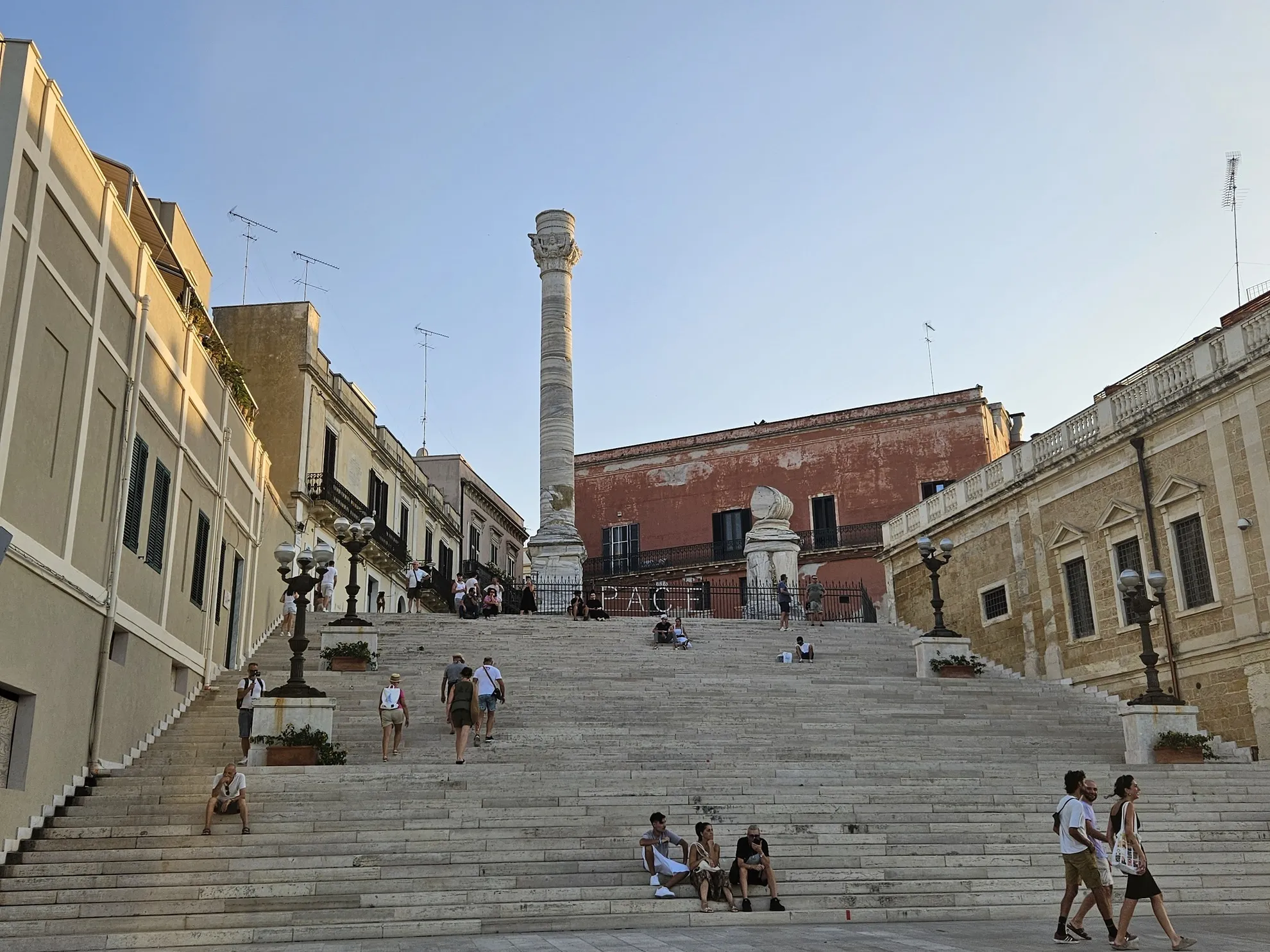
– City symbol. They once marked the end of the Via Appia; today, only one remains standing, subject to restoration and archaeological studies.
– Panoramic staircase. Perfect for photographs and for enjoying performances by street artists and local musicians.
Palazzina del Belvedere and Faldetta Collection
– Ancient art finds. On display here are bronzes and ceramics recovered during urban excavations or from the port waters.
– Cultural stop. Regular exhibitions organized by regional and national institutions allow you to explore Brindisi’s archaeological and artistic heritage.
THE MONUMENT TO THE ITALIAN SAILOR
On the other side of the port stands an imposing wheel-shaped structure, paying homage to Brindisi’s maritime tradition.
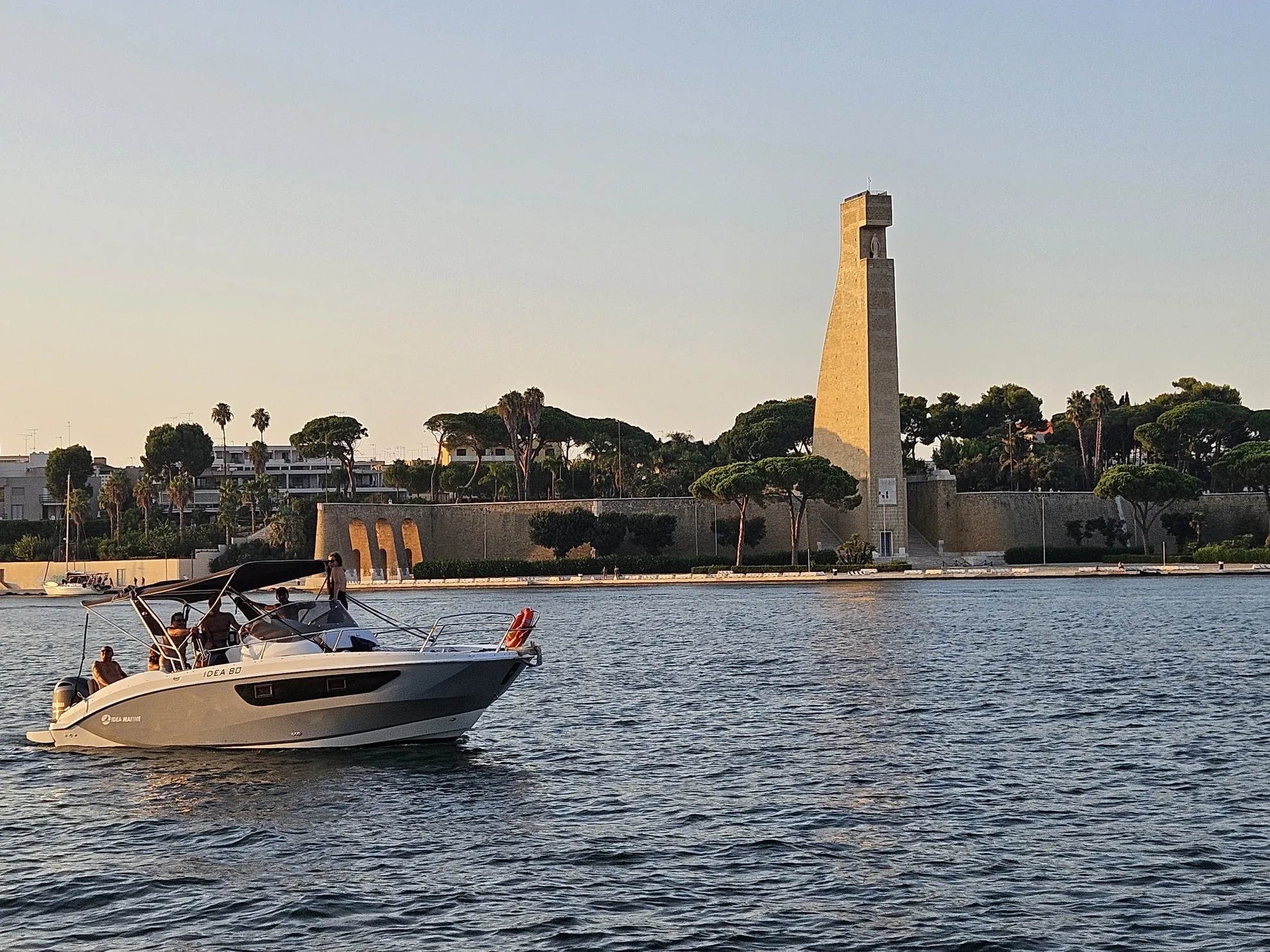
How to get there
– Transportation. You can reach it by bus, car, or by ferryboat crossing the channel. The short trip by sea offers unique views of the port.
An unrivaled panorama
– Panoramic terrace. From the top of the monument, you can enjoy a full view of the city and port. At sunset, the sky is painted in warm hues that blend with the lights of maritime traffic. During events like the Italian Navy Day, special guided tours are organized.
BEACHES AND COASTAL AREAS NEARBY
For a moment of relaxation by the sea, Brindisi offers beaches that can be reached in a short time from the city center.
To learn more about Brindisi’s beaches, we recommend reading this in-depth content: Brindisi Beaches
Punta Penne Beach
– Nature and tranquility. Just a few kilometers from the center, it boasts crystal-clear waters and distinctive dunes: ideal for those seeking less crowded spots.
– Practical tip. Don’t forget an umbrella and water, as beach services are basic. It’s perfect for an authentic encounter with nature.
Punta del Serrone Regional Park
– Hiking trails. Amid Mediterranean scrub and coastal views, it's a perfect spot for outdoor walks. There are also picnic areas and ideal vantage points for birdwatching.
ARCHAEOLOGICAL SITES AND FORTIFICATIONS
Brindisi protects important historical evidence, spread among archaeological sites and ancient fortresses.
San Pietro degli Schiavoni Archaeological Area
– Underground site. Beneath the Verdi Theater lie the remains of a Roman neighborhood, discovered during renovation work.
– Unique atmosphere. Walking among ancient ruins while the modern city thrives just a few meters above you is a true step back in time.
Swabian Castle (Castello di Terra)
– Commissioned by Frederick II of Swabia. Its majestic structure dominates the historic center. Still largely used by the military authorities, it opens on special occasions for visits and cultural initiatives.
Alfonsino Castle (Forte a Mare)
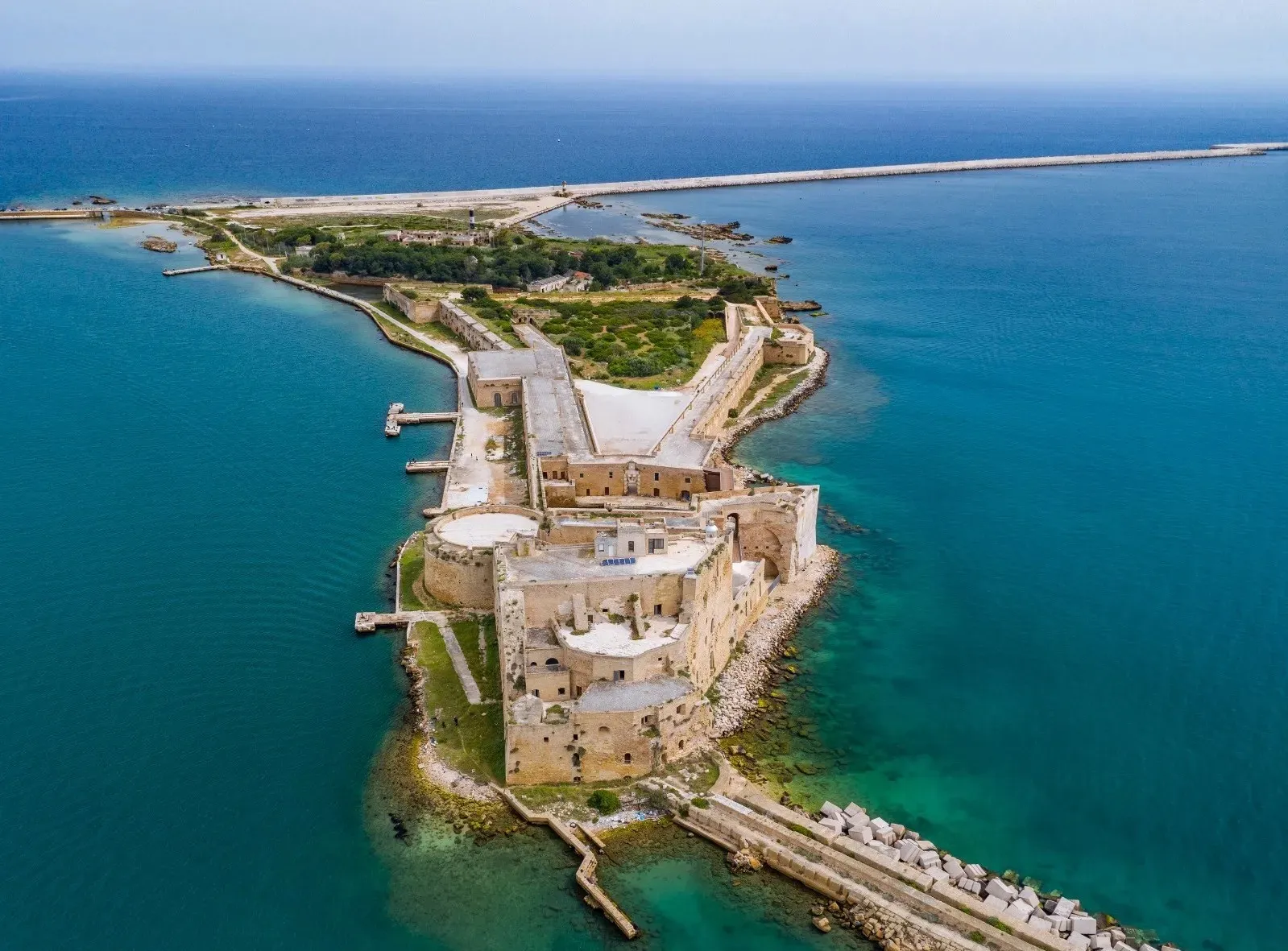
– 16th-century fortress. Built on a small island connected to the mainland, it offers spectacular views of the port.
– Special visits. Generally closed, it is only accessible during certain cultural events. For updates on openings, consult the City’s official channels.
To learn more about Alfonsino Castle, we recommend reading this in-depth content: Castello Alfonsino
16th-Century Bastions
– Bastione Carlo V. A pentagonal structure near the train station, continuously undergoing restoration to preserve its history.
– Bastione San Giacomo. Today it hosts exhibitions; from its walls you can admire enchanting views of the city, especially at sunset.
THE CHURCH OF SANTA MARIA DEL CASALE
Near the airport and just a short distance from the city center, you'll find one of the finest examples of Apulian Gothic architecture: the Church of Santa Maria del Casale.
Exterior architecture
– Color contrast. The alternation of white stone and pinkish inlays characterizes the façade, a symbol of Romanesque-Gothic architecture in Puglia. It attracts art history enthusiasts from all over Italy.
Frescoed interior
– 14th-century Last Judgment. A significant pictorial cycle with evocative iconography bearing witness to Puglian medieval art.
– National Monument. Declared as such in 1875, it is a priceless historical and artistic heritage. During specific periods, expert guides offer thematic visits.
WHERE TO EAT: AUTHENTIC FLAVORS AND FRESH SEAFOOD
Brindisi’s cuisine is a fusion of sea and land, featuring simple dishes that reflect the city’s deep-rooted heritage.
If you’re interested in learning more about restaurants in Brindisi, we recommend reading the in-depth content Ristoranti Brindisi
Seafood specialties
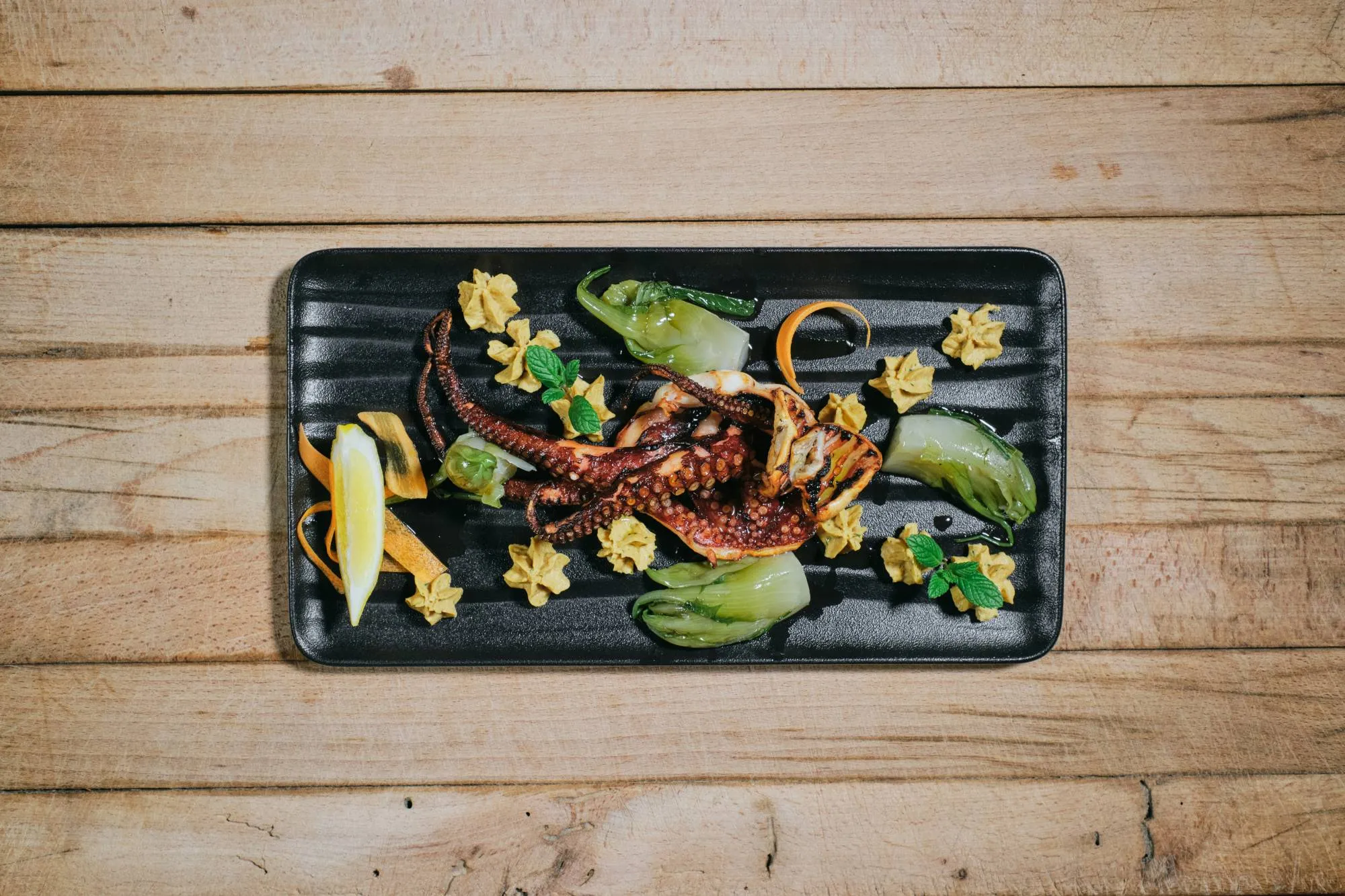
– Fried fish and octopus sandwich. Perfect for a quick, tasty snack. The octopus, often grilled on site, is a unique delight.
– Pasta and main courses with fish. From Taranto-style mussels to sauces made with the day’s catch: there’s no shortage of traditional dishes. Mussels, served with local bread, are a must-try for food enthusiasts.
Dishes from the rural tradition
– Purpette di fave (fava bean balls). Legume-based meatballs, symbolizing the flavors of the Salento hinterland.
– Local wines. A glass of Primitivo or Negroamaro is a must. According to the Consorzio di Tutela Vini DOC Salice Salentino, exports of these labels are steadily growing internationally.
A convivial atmosphere
– Typical restaurants. Between the waterfront and the historic center, you’ll find several farm-to-table trattorias that use fresh produce from local farmers and fishermen, ensuring a genuine culinary experience.
NIGHTLIFE AND ENTERTAINMENT
When the sun goes down, Brindisi comes alive with engaging musical events, cultural happenings, and a vibrant nightlife.
Downtown nightlife
– Piazza Santa Teresa, Corso Garibaldi, and Piazza Cairoli. Here, venues stay open late, featuring musical performances and creating a lively atmosphere.
Waterfront by night
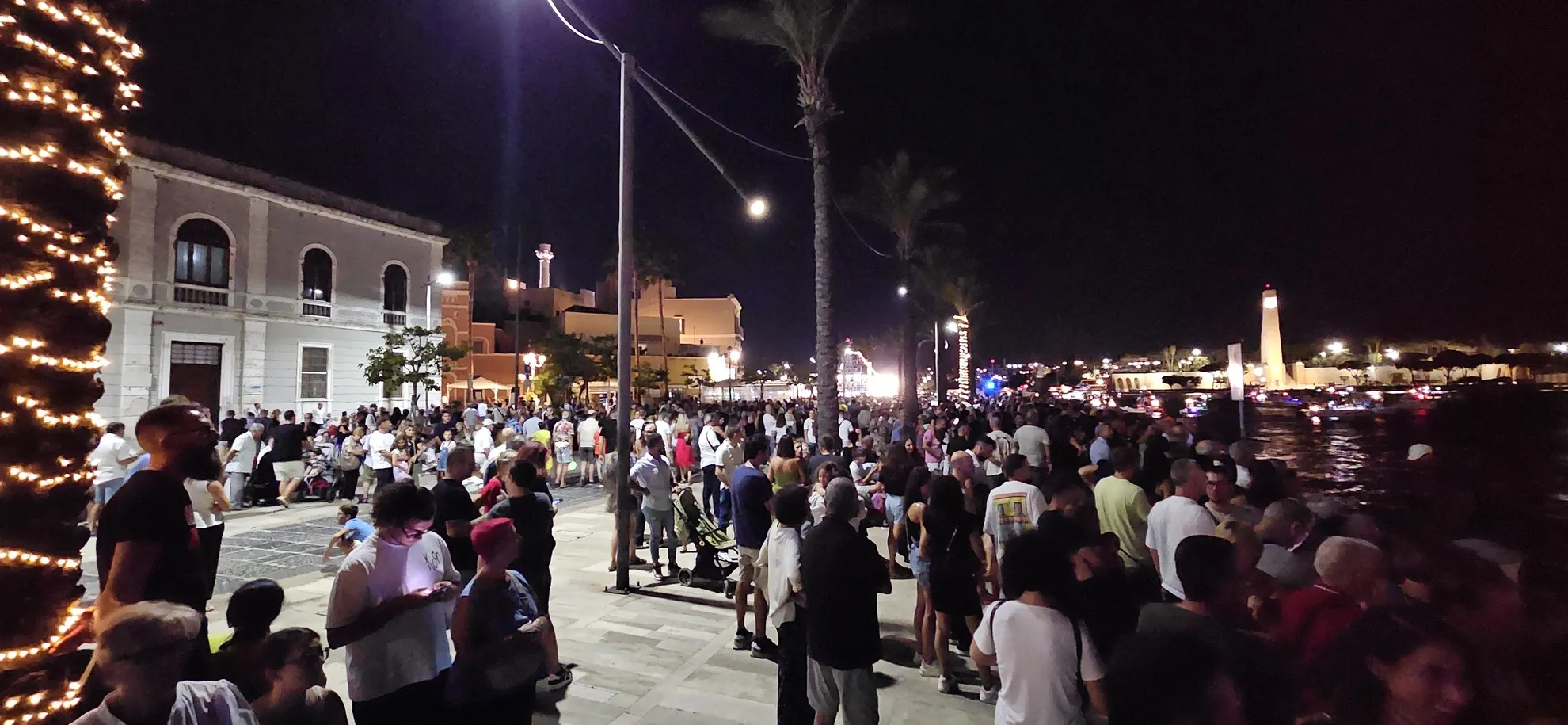
– Cocktail bars and pubs. The sea view, combined with live music and entertainment, makes for pleasant, relaxing evenings. In the summer months, the “Festa del Mare” (Sea Festival) enlivens the city with food stalls, shows, and fireworks.
Cultural events and festivals
– Jazz concerts and live music. The summer season is full of events, while the Nuovo Teatro Verdi, right in the center, offers theatrical performances, film festivals, and experimental events.
– Patronal festivals. Not to be missed are the celebrations in honor of Saint Theodore of Amasea, which include the evocative maritime procession tied to ancient local traditions.
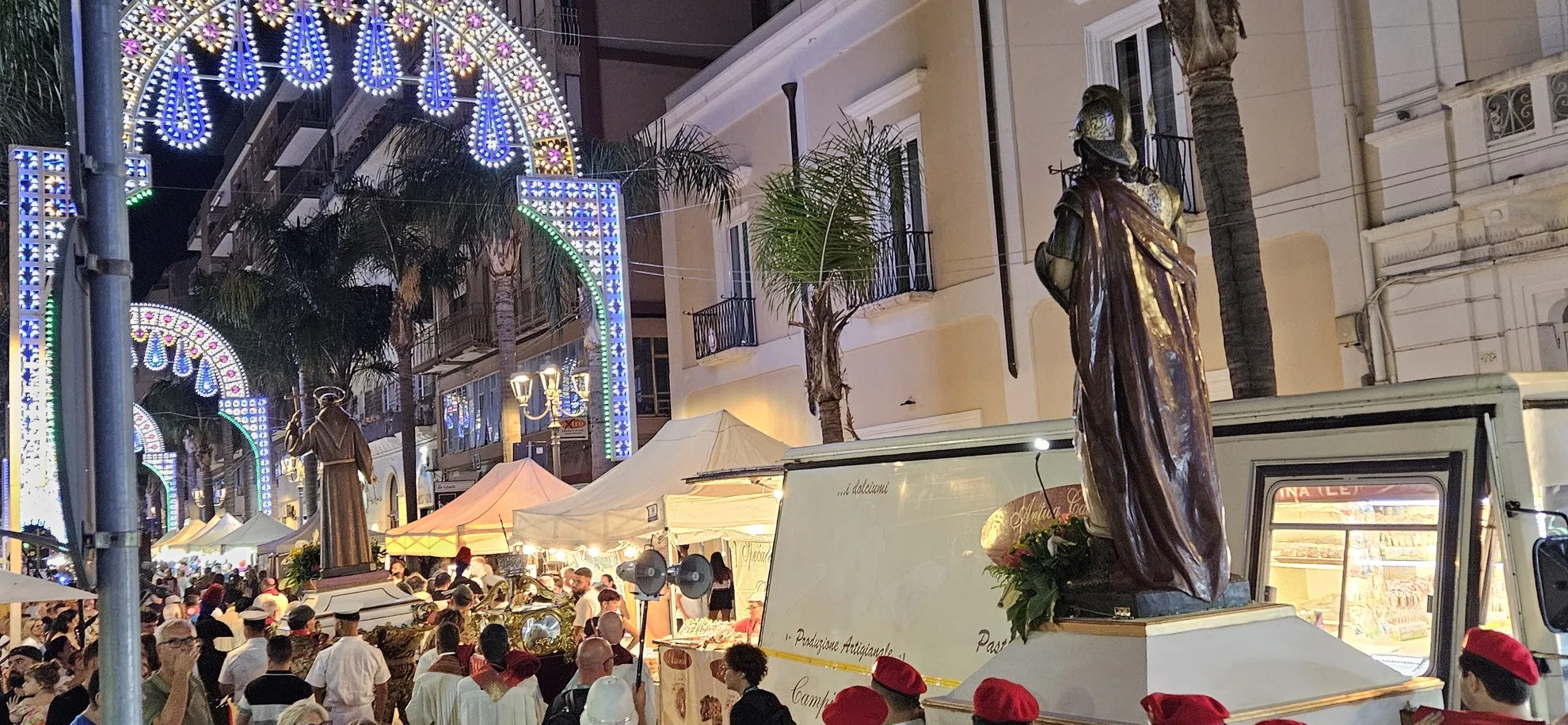
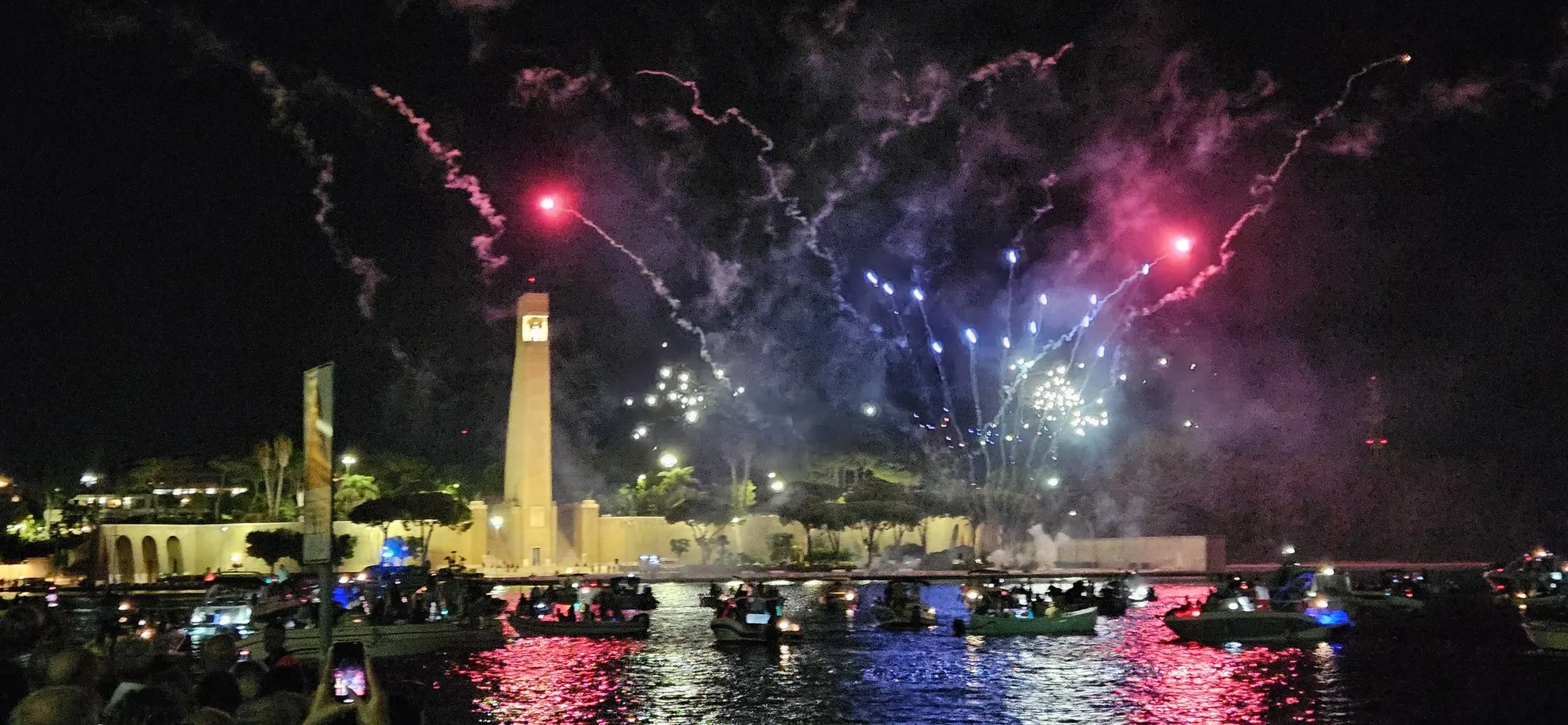
ONE DAY IN BRINDISI: RECOMMENDED ITINERARY
If you have limited time, here’s a concise plan to see the main attractions in just one day.
Morning
1. Regina Margherita Waterfront. Stroll along the port, stopping at the Scalinata Virgilio and the Roman Columns for your first photos.
2. Piazza Duomo. Visit the Cathedral, the Knights Templar Portico, and the Provincial Archaeological Museum.
3. San Pietro degli Schiavoni. Check opening times to explore the remains of Roman Brindisi beneath the Verdi Theater.
Lunch
– Ristoranti Brindisi. Enjoy a seafood pasta dish and a main course or a vegetarian option with local ingredients. Stop by the covered market to purchase fresh products.
Afternoon
1. Monument to the Italian Sailor. Hop on the ferryboat or take public transportation; enjoy the 360° view from the monument.
2. Alfonsino Castle (if open). Reach it by car or taxi: the 16th-century fortress offers a splendid view of the sea.
Evening
– Aperitif and dinner. End the day between Piazza Cairoli and the waterfront. Reserving a table with a port view adds a romantic touch to your evening.
We recommend:
PRACTICAL TIPS FOR YOUR STAY
Some useful advice for getting the most out of your stay in Brindisi.
How to get here
– Salento Airport (BDS). Located 6 km from the city center, it is connected by bus and taxi.
– Railway station. Regional and national trains connect Brindisi with the main cities in Puglia and throughout Italy.
Getting around
– On foot. The historic center is easily explored on foot.
– Bus and taxi. Perfect for reaching more distant areas, such as Castello Alfonsino or the Church of Santa Maria del Casale.
– Ferryboat. Crossing the port by boat is a must-do experience, ideal for taking spectacular photos.
If you need a chauffeur-driven car service, we recommend: transfer.puglia.it, where you can directly choose the most convenient option for you.
Where to park
– Paid parking. Near Porta Napoli or in the immediate vicinity of the center, with blue zones requiring an hourly fee.
– Free parking. Available in more peripheral areas (Via del Mare or Via Spalato), from which you can reach the center with a short walk.
Best time to visit
– Mild climate. Spring and fall are perfect for exploring the city without the summer heat.
– Summer. Brindisi comes alive with events and festivals, but temperatures can be high. Choose morning or late afternoon for sightseeing
Excursions in the surroundings
– Ostuni, Lecce, and the Itria Valley. If you have a few extra days, rent a car to discover rural Puglia: farmsteads, agritourisms, and local products await you.
CONCLUSION
If you’re still wondering what to see in Brindisi, the answer is: a lot. From the Roman ruins beneath the Verdi Theater to the imposing fortresses, passing through the allure of the Via Appia and the authentic flavors of local cuisine, this city offers a perfect blend of sea, history, and culture. Whether you have just a few hours or several days, let yourself be enchanted by its evocative alleys, waterfront, and centuries-old traditions. You’ll be welcomed by the warmth of the locals, the scent of salt air, and the magic of a place that knows how to renew itself without losing its roots. Have a wonderful journey discovering Brindisi!"
